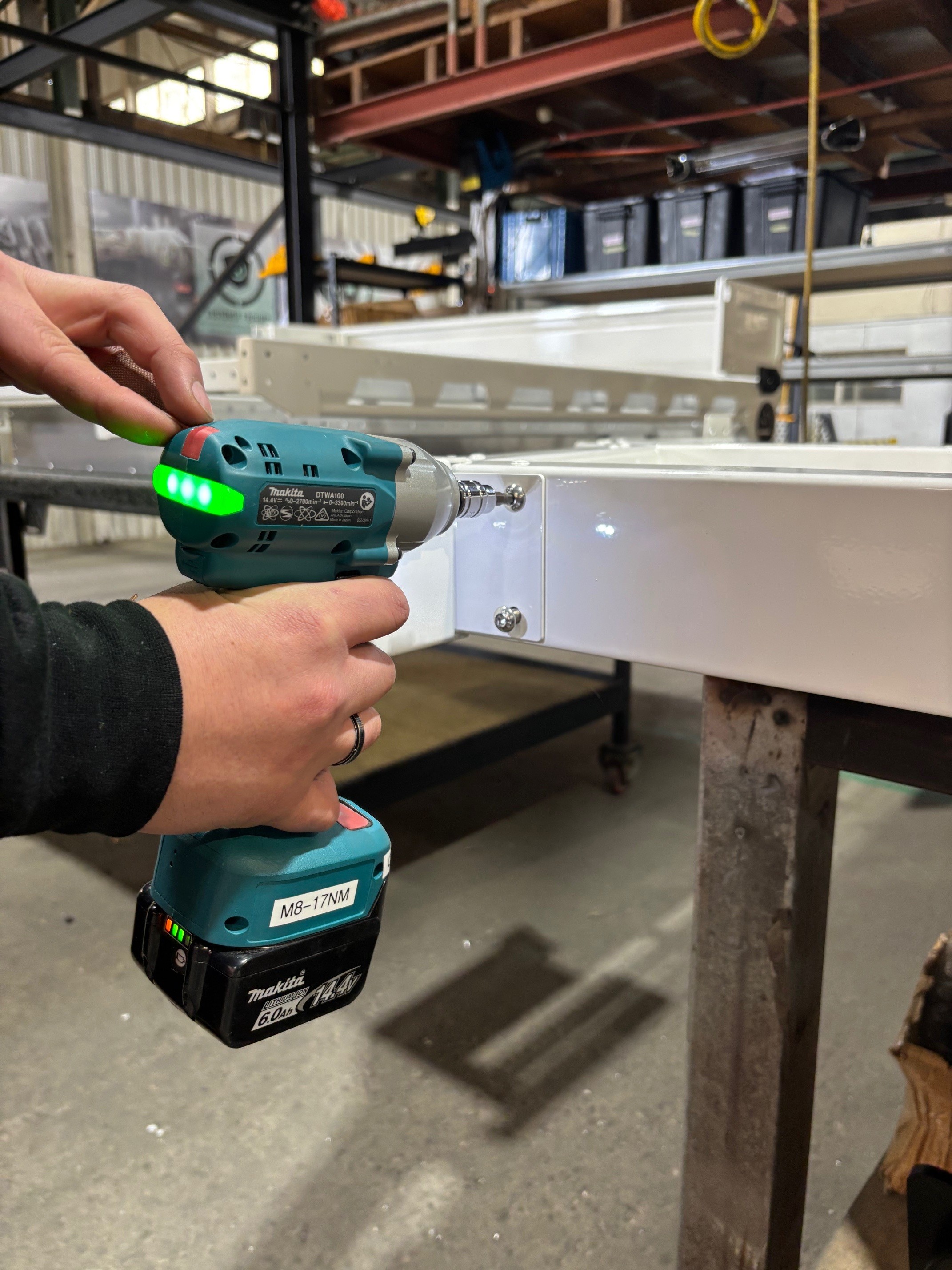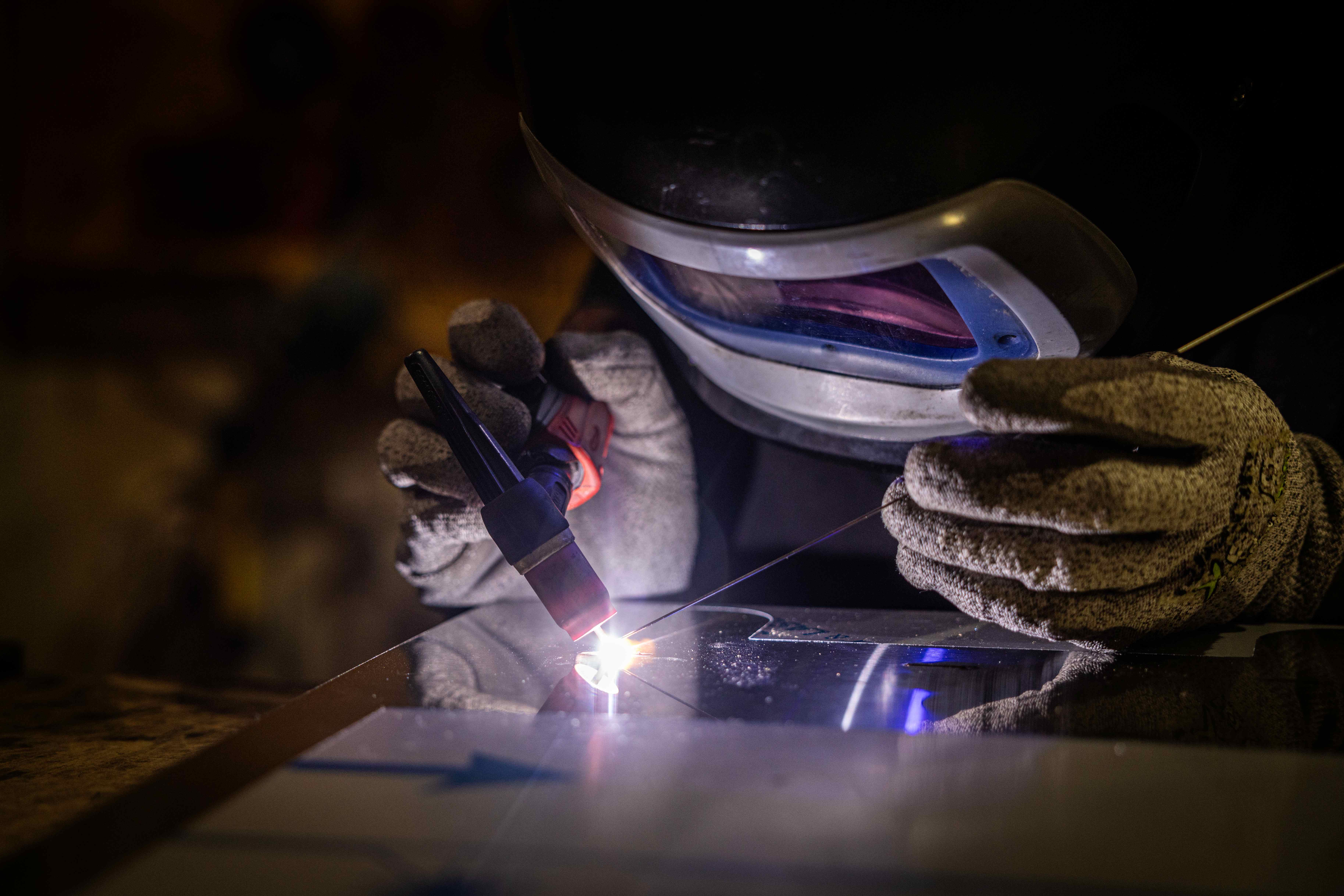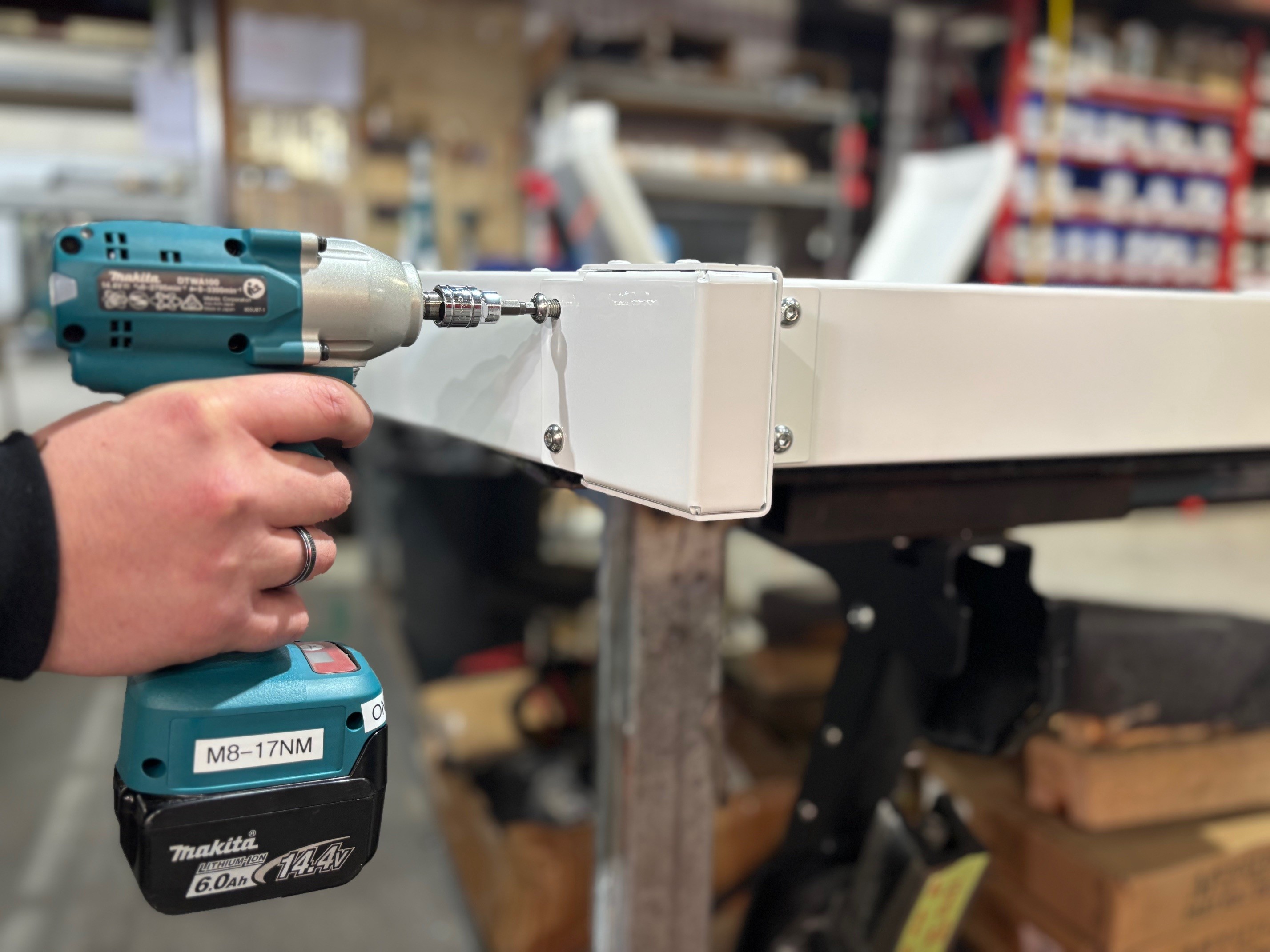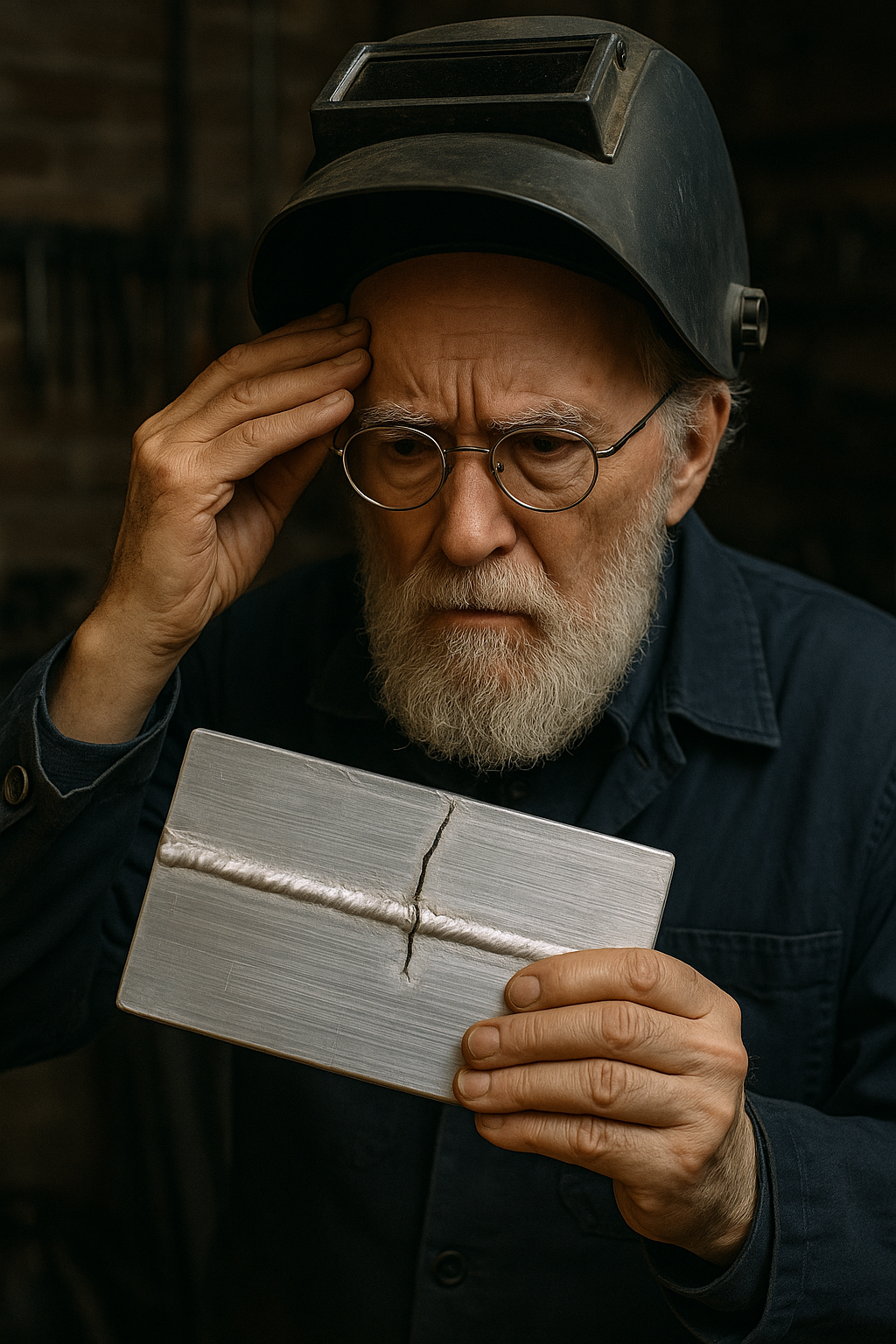Debunking “fully welded is best”
Why we mix welding, bonding & mechanical fixings
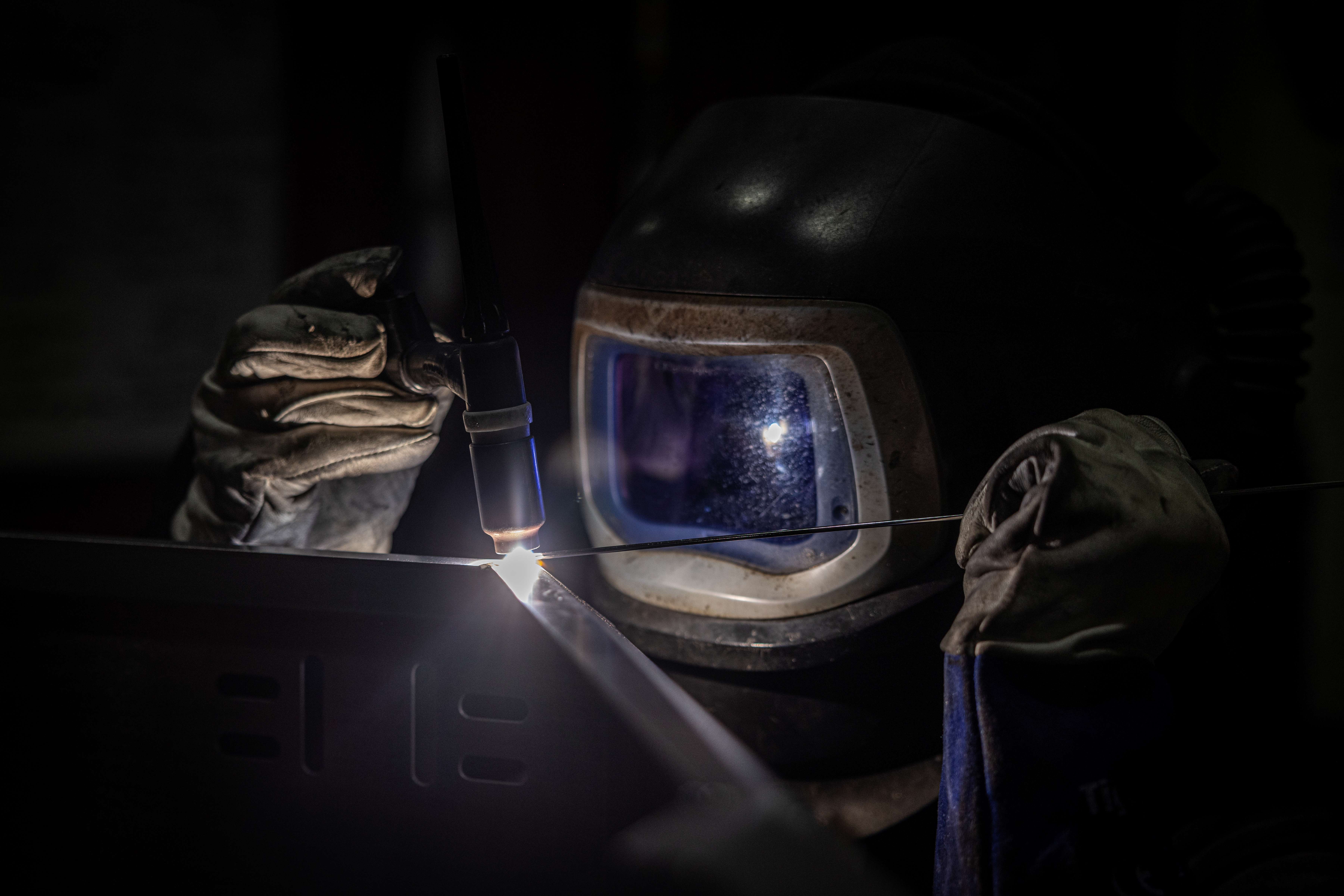
When it comes to aluminum, it’s a very unique material to be using in a transport environment. Fatigue is a massive issue. There’s a reason planes are manufactured using the same method we use. Let’s dive deeper on the subject.
Debunking “Fully Welded Is Best”
When it comes to aluminium, it’s a unique material to use in a transport environment. Fatigue is a massive issue. There’s a reason planes are manufactured using the same method we use. Let’s dive deeper into the subject.
Why We Mix Welding, Bonding & Mechanical Fixings
And why that’s stronger for aluminium in the transport industry
For aluminium construction inthe transport industry, the most durable build is a smart mix of welding + structural bonding + mechanical fixings. It spreads loads, controls fatigue, keeps weight in check, and makes every unit repeatable and serviceable. That’s why M2 Overland builds this way.
1) The Claim You Hear
Some competitors say “fully welded is best” and that using rivets/bolts means “inferior.”
In most cases, they would be correct. When it comes to aluminium in the transport industry, that logic breaks. Welding creates a heat-affected zone that reduces strength by 50% around the weld, concentrates fatigue, and invites cracks over time. The “fix” is usually to make parts thicker and heavier - which just moves problems around.
2) The Principle That Works in the Real World
Aluminium lasts when you control movement and spread loads
Bonded + mechanically fixed joints distribute stress and damp vibration over a wide area.
Selective welding is used where it’s best (localised load paths, sealing, specific interfaces).
This isn’t “hardware-store rivets.” Every fixing is specified for shear/tension, grip length, clamp, and joint stack-up - then tested.
3) How We Prove It (Simple Version)
FEA, in Plain English
Finite Element Analysis (FEA) is a digital crash test for parts. We build a virtual model of our trays/canopies, tell the software what loads to apply, and it shows where stress builds up and how parts will fatigue over time - so we can fix weak spots early.
We commission professional transport engineers to run these studies and set duty cases.
We test well beyond the usual.
Most brands in our industry don’t run formal fatigue testing at all - they build what they think is best. Even the light transport standard of testing to 750,000 cycles is already more than most are doing.
We often test to COF-style duty at 2,000,000 cycles, then add flex-fatigue on top for the 4×4 fans. That’s where weaknesses show up - and get designed out - before you ever see them.
The load cases we run (what that means in real life)
Emergency braking / crash-like loads (forward load): mass surging forward under hard braking.
Hard acceleration (rearward load): reverse surge when you launch and the vehicle hooks up.
Vertical static & dynamic loading (downward load): payload + potholes/bumps compressing the system from above
Flex-fatigue (chassis twist): over and above any standard proves joints under body/chassis twist on ruts and corrugations (for the 4×4 fans).
Then we try to break it - physically
Real-world & cycle testing: shaker/cycle rigs pound the joints with repeated vibration and load.
Ambassador abuse testing: real corrugations, overloaded payloads, and the occasional rollover. We measure outcomes and loop them straight back into design.
4) Quality, Repeatability, Serviceability (Customer Wins You Feel)
Repeatable builds: Mechanical interfaces reduce variation from individual welder technique - every unit leaves our door the same.
Modular & upgradable: Bolt-in options let you add or replace a damaged part without cutting and re-welding.
Uptime: Field repairs are faster and cleaner with serviceable joints.
Weight where it matters: We avoid the “fully welded, then thickened everywhere” spiral that ends up heavier than traditional steel trays just to survive fatigue.
5) “Isn’t Fully Welded Stronger?”
For aluminium in the transport industry? Not over time.
Welding makes joints rigid where some controlled movement actually reduces fatigue. Bonded & mechanically fixed joints damp vibration and spread stress, which is exactly why aircraft structures are riveted and bonded instead of fully welded.
6) What We Use (and Why)
Selective welding where it adds strength without concentrating fatigue.
Structural adhesives to spread load and add damping.
Engineered fixings (correct grip, shear/tension class, torque spec, and locking) to clamp the joint and add redundancy.
7) Cost & Speed (So We’re Clear)
We don’t choose this to save money. Full welding is often faster and cheaper on the day. We choose mixed joining because the engineering and lifespan are better - and that’s what our customers pay us for.
8) Industry Reality Check
Across harsh markets with endless corrugations (think Australian outback), the leaders use mixed joining for aluminium trays and canopies. Where you do see “all-welded aluminium,”notice how thick and heavy those structures must be to survive weld-zone and vibration fatigue. That’s the weight you carry every day. You might as well save the cost and get a steel tray in this instance.
To Summarise
Welds in aluminium concentrate fatigue beside the seam.
Bond + fix + selective weld spreads loads and controls vibration → longer life.
We engineer with FEA via professional transport engineers, while many brands don’t formally fatigue test; we test to ~2,000,000 cycles (COF-style), add flex-fatigue, and abuse testing in the field.
You get repeatable builds, modularity, faster repairs, and better weight.
We don’t do this because it’s cheaper - we do it because it’s better engineering.
FAQ
“Do you use rivets because it’s faster?”
No. It’s usually slower. We do it because it’s stronger in fatigue over time and more serviceable.
“Are your fixings just generic rivets?”
No. We specify by shear/tension rating, grip length, clamp, and lock them for vibration. Then we test.
“So you never weld?”
We weld where it’s the right solution - and only there. The joint strategy is engineered, not one-size-fits-all.

